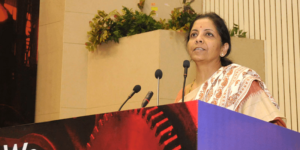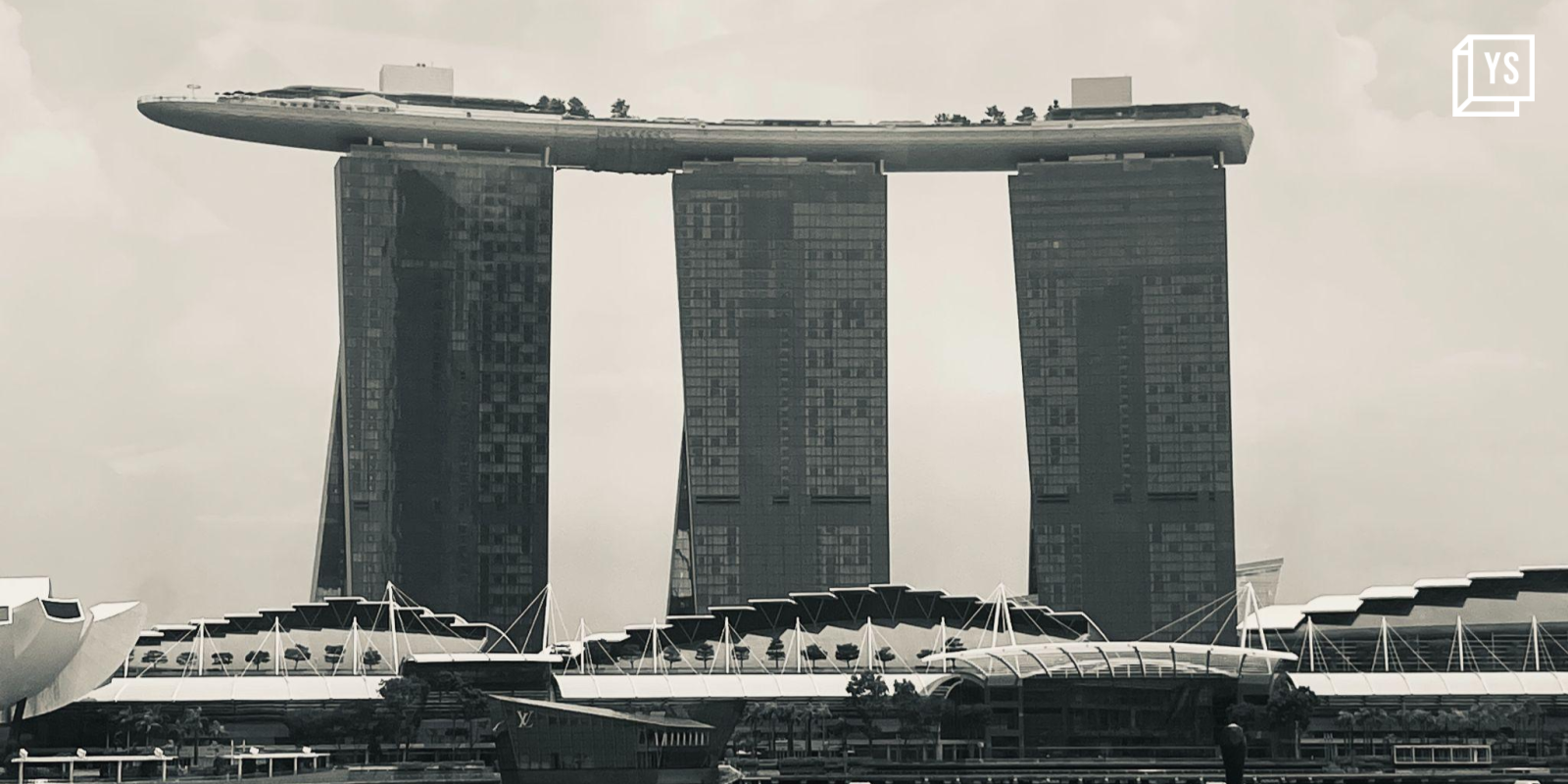
For all its rich history and its various cultural touchstones, Singaporeans love to talk about three things—the pervasive heat, the exceptional local cuisine, and how small Singapore is.
While discussions on weather and food resonate universally, the emphasis on Singapore’s small size holds significant importance. With a land area of 735 square kilometers, merely 0.2% of India’s expanse, the need for efficiency and sustainability is woven into the very fabric of Singaporean society.
To put it into perspective, Delhi surpasses Singapore in both size and population, being over twice as large.
This emphasis on efficiency manifests in several ways: from meticulous urban planning, resource utilisation, and waste disposal, to conscious consumption and, most importantly, the way Singaporeans think about sustainability.
“Singapore is a very community-driven country…growing up, we’re taught that instead of asking for the government to do things for us, we rely on our community—family, friends, neighbours—to find solutions, and that is an approach we seem to have taken to combat climate change as well,” says a water-focussed startup founder from Singapore.
While the cultural psyche of Singaporeans may not inherently lean towards relying on the government for proactive measures, there is strong policy-level support given to all facets of sustainability endeavors—whether it’s at the community, enterprise, or industry levels.
Singapore approaches sustainability like a team effort involving the public, private, and people sectors…it’s all about communities joining forces to ensure a clean environment, make the most of resources, implement smart waste management, and embrace recycled water, etc, Tze Ch’in Ong, Deputy Secretary at Singapore’s Ministry of Sustainability and the Environment, tells YourStory.
<figure class="image embed" contenteditable="false" data-id="535486" data-url="https://images.yourstory.com/cs/2/f49f80307d7911eaa66f3b309d9a28f5/JVP2023D3-127-1705418459336.jpg" data-alt="Singapore" data-caption="
Tze Ch’in Ong, Deputy Secretary at Singapore’s Ministry of Sustainability and the Environment (Image credit: Singapore International Foundation)
” align=”center”> Tze Ch’in Ong, Deputy Secretary at Singapore’s Ministry of Sustainability and the Environment (Image credit: Singapore International Foundation)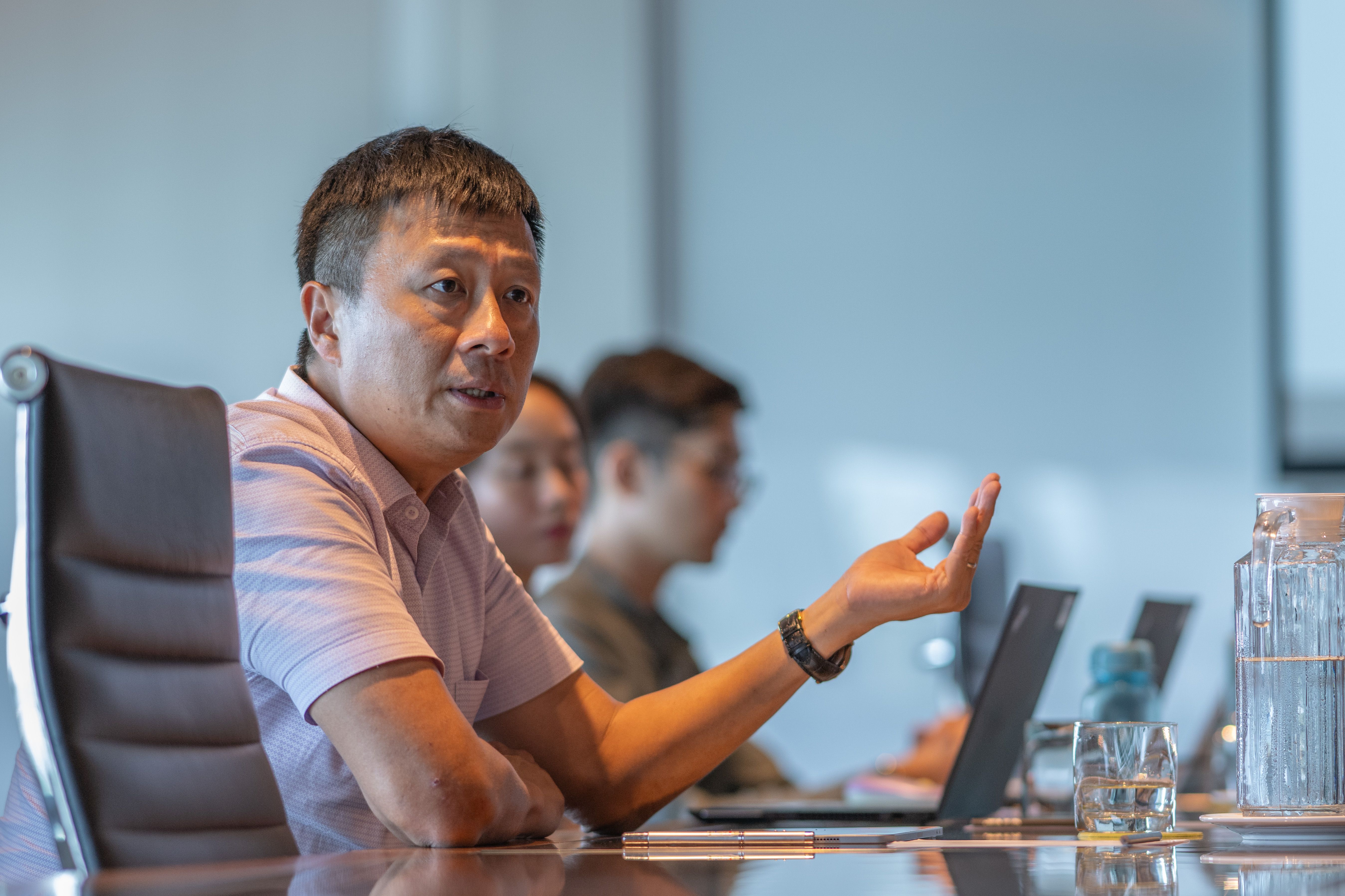
Initiatives like the Singapore Green Plan 2030, which charts numerous eco-friendly measures into law, including planting a million trees, increasing solar energy deployment fourfold, minimising landfill waste, and achieving carbon neutrality by 2030, is one of the many ways the country leads the charge to adapt and become resilient to climate change at a policy-level.
It has also set its sights on establishing a global carbon exchange and marketplace to enable buying and selling of carbon credits, called the Climate Impact X (CIX).
The initiative will be led by key players such as the Singapore Exchange (SGX), DBS, Standard Chartered, and Temasek, and aims to facilitate transactions between carbon credit buyers and sellers, marking a notable initiative in and by the country’s biggest financial sector players.
“What makes sustainability work in Singapore is the government’s willingness to get hands-on with community programs and social enterprises. Their open-door policy has encouraged more people to step up and get involved in the cause,” says Chong Tee Lim, Co-founder and chief marketing officer of Wateroam, a startup that builds portable filters to make clean water accessible.
A blueprint for climate change mitigation and adaptation, Singapore’s sustainability efforts are rooted in a no-nonsense commitment by its people and its government.
Grassroots-level initiatives
The focus on sustainability in Singapore starts at a community level, which includes self-starters and people in a neighbourhood coming together to find solutions.
Repair Kopitiam, for example, is a community initiative that focuses on repurposing and repairing broken items such as household appliances, torn clothing, and damaged furniture. Started by Sustainable Living Lab, a sustainability consultancy company, Repair Kopitiam looks for ways to recycle and reuse household items in case of small damages, as well as teach people how to repair these items themselves in the future.
<figure class="image embed" contenteditable="false" data-id="535479" data-url="https://images.yourstory.com/cs/2/f49f80307d7911eaa66f3b309d9a28f5/IMG7399-1705417728094.jpg" data-alt="Singapore" data-caption="
(Image credit: Aparajita Saxena)
” align=”center”> (Image credit: Aparajita Saxena)
.thumbnailWrapper
width:6.62rem !important;
.alsoReadTitleImage
min-width: 81px !important;
min-height: 81px !important;
.alsoReadMainTitleText
font-size: 14px !important;
line-height: 20px !important;
.alsoReadHeadText
font-size: 24px !important;
line-height: 20px !important;

Facilitated by “Repair Coaches,” these regular gatherings, occurring on a weekly and monthly basis, involve the coaches visiting communities to collect malfunctioning appliances and items. They then either repair these items for a nominal fee or conduct workshops to teach people ways to repair them on their own.
Another interesting example is City Sprouts, a food-focused initiative that teaches communities ways to cultivate vegetables using techniques such as vertical farming, soilless farming, mushroom farming, and on trellises.
City Sprouts also has a compost pit and biogas setup to help showcase how effortless it can be for neighborhoods to repurpose waste into energy.
“The idea is for people to visit City Sprouts, learn some new ways in which we’re able to grow basic vegetables and herbs, and then try and do something similar back home,” says Zac Toh, Founder of the company.
Startups and the Singapore government
Enterprises and startups form the next layer in the sustainability equation in Singapore, as everywhere else in the world. The biggest reason the country’s nearly 600 sustainability-focused startups are able to thrive and make a real difference is government support, which extends beyond just creating favourable operating conditions to tailoring policies to allow all kinds of efforts to pan out.
Take, for instance, Mono SG, a startup that diverts grocery items that are close to their best-before dates from bins and landfills where they would have been incinerated, to vulnerable communities for distribution.
<figure class="image embed" contenteditable="false" data-id="535481" data-url="https://images.yourstory.com/cs/2/f49f80307d7911eaa66f3b309d9a28f5/IMG7364-1705417807789.jpg" data-alt="Singapore" data-caption="
Mono SG’s headquarter in Singapore, with CEO and founder, Leonard Shee (Image credit: Aparajita Saxena)
” align=”center”> Mono SG’s headquarter in Singapore, with CEO and founder, Leonard Shee (Image credit: Aparajita Saxena)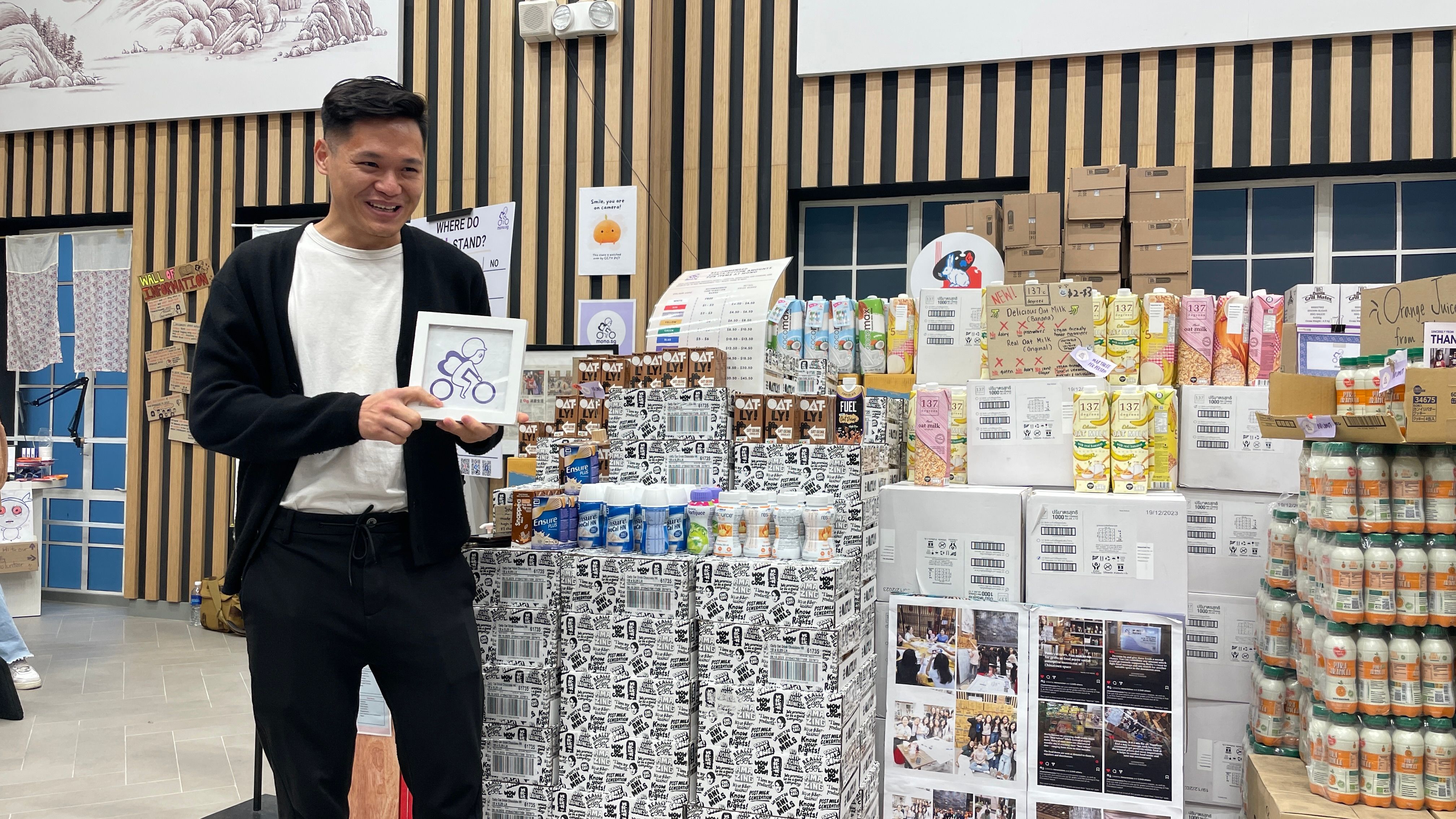
.thumbnailWrapper
width:6.62rem !important;
.alsoReadTitleImage
min-width: 81px !important;
min-height: 81px !important;
.alsoReadMainTitleText
font-size: 14px !important;
line-height: 20px !important;
.alsoReadHeadText
font-size: 24px !important;
line-height: 20px !important;

Using various digital touchpoints such as its app, Instagram and Telegram to distribute these packaged grocery items—for nominal donations—Mono SG works directly with suppliers, distributors and stockists to source packaged food items nearing their best-before dates—which would’ve been usually thrown out by big supermarkets by then—and sells them to disadvantaged communities at highly discounted prices.
“The reason we’re able to do something like this is government support. Usually, you wouldn’t be allowed to stock products past their best-before dates…but when we explained to regulators how this works, they readily provided support,” says Leonard Shee, Co-founder of Mono SG.
The government not only created special provisions for companies like Mono SG to operate, but also offered grants—such as the Call For Ideas Fund grant, an initiative by the National Environment Agency—to help the startup scale across the country.
The Singapore government has been quite supportive of startups in this [sustainability/climate-tech] sector…they have supported with funds, grants, subsidised spaces, and even direct collaborations, Shee adds.
Renewable energy company Sembcorp concurs. Its space-saving floating solar farm—the length of 45 football fields—came into being in collaboration with the country’s national water agency, PUB. The inauguration of the facility, a little outside of the city centre, was done by the then Prime Minister of Singapore, Lee Hsien Loong.
“Our floating solar farm has fantastic backing from the Singapore government. They don’t just support us, they highlight it as a prime example of how you can produce clean energy even when dealing with constraints in a country, especially limited space like we do here,” a Sembcorp spokesperson says.
<figure class="image embed" contenteditable="false" data-id="535483" data-url="https://images.yourstory.com/cs/2/f49f80307d7911eaa66f3b309d9a28f5/JVP2023D3-55-1705417905132.jpg" data-alt="Sembcorp" data-caption="
Sembcorp’s floating farm (Image credit: Singapore International Foundation)
” align=”center”> Sembcorp’s floating farm (Image credit: Singapore International Foundation)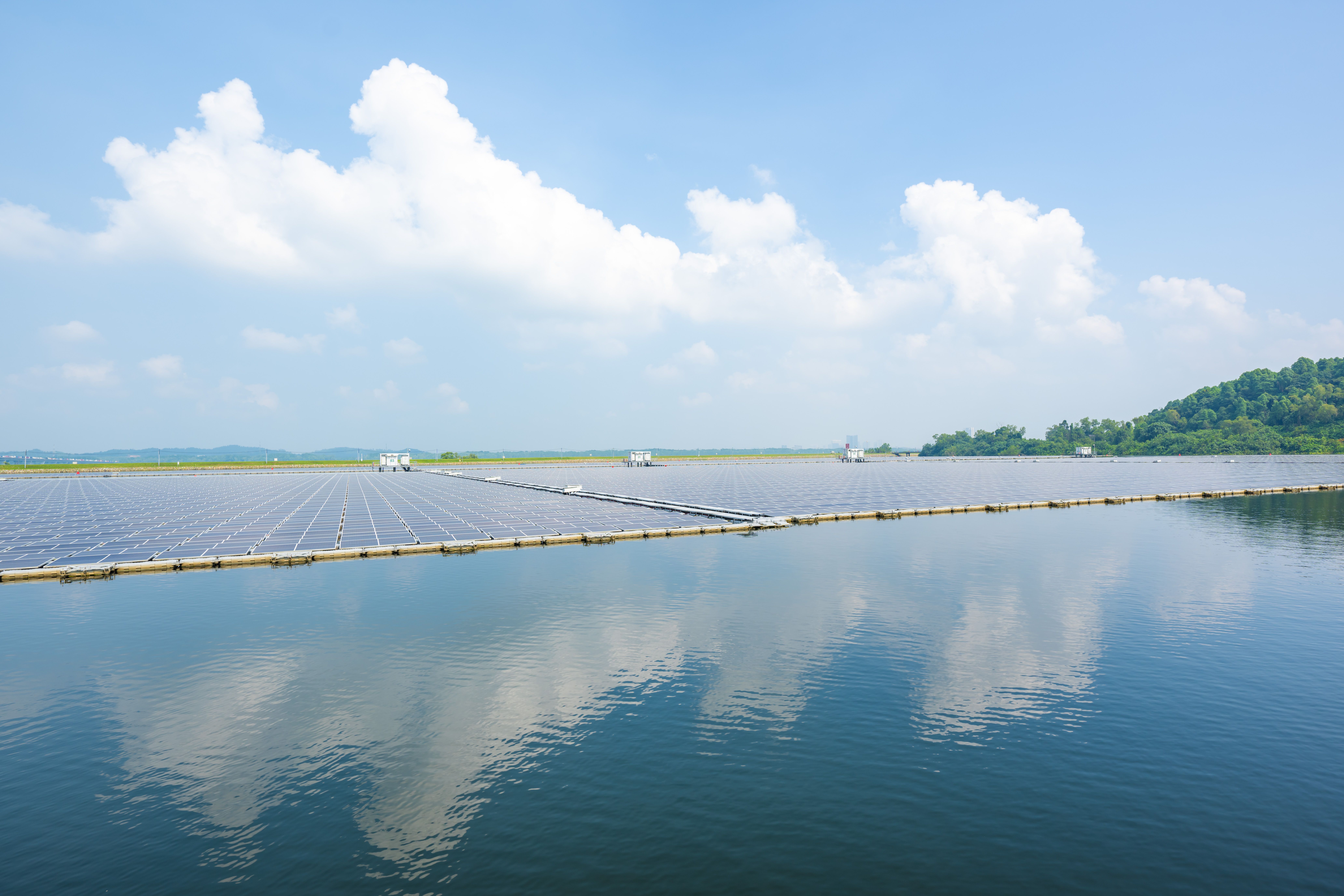
.thumbnailWrapper
width:6.62rem !important;
.alsoReadTitleImage
min-width: 81px !important;
min-height: 81px !important;
.alsoReadMainTitleText
font-size: 14px !important;
line-height: 20px !important;
.alsoReadHeadText
font-size: 24px !important;
line-height: 20px !important;

Walking the talk
While Singapore’s Green Plan 2030 serves as a guidepost for citizens to follow and policymakers to look to for direction, the government also walks the talk by actively embodying the tenets of sustainability throughout the country, starting from its own offices and buildings.
Take the Singapore National Gallery—home to some of the greatest Southeast Asian modern art masterpieces—as example. This must-visit tourist spot in the heart of the city-state demonstrates how sustainability can be planned for and built into urban architecture.
Equipped with solar panels to reduce grid energy consumption, the rooftop of the gallery has roof gutters and shallow reservoirs all around to capture water for cooling the building without spending extra on air conditioning and electricity.
Eliminating paper-based maps and tickets, using floor-to-ceiling glass windows to allow natural light in, and spotlighting sustainability-focused art installations are other low-hanging sustainability measures the Singapore National Gallery has incorporated, portraying that one need not take drastic, expensive measures when it comes to eco-conscious thinking.
<figure class="image embed" contenteditable="false" data-id="535484" data-url="https://images.yourstory.com/cs/2/f49f80307d7911eaa66f3b309d9a28f5/23-1705418084608.jpg" data-alt="National Gallery" data-caption="
Lots of natural lighting eliminates the need for electricity at The National Gallery, Singapore (Image credit: Singapore International Foundation)
” align=”center”> Lots of natural lighting eliminates the need for electricity at The National Gallery, Singapore (Image credit: Singapore International Foundation)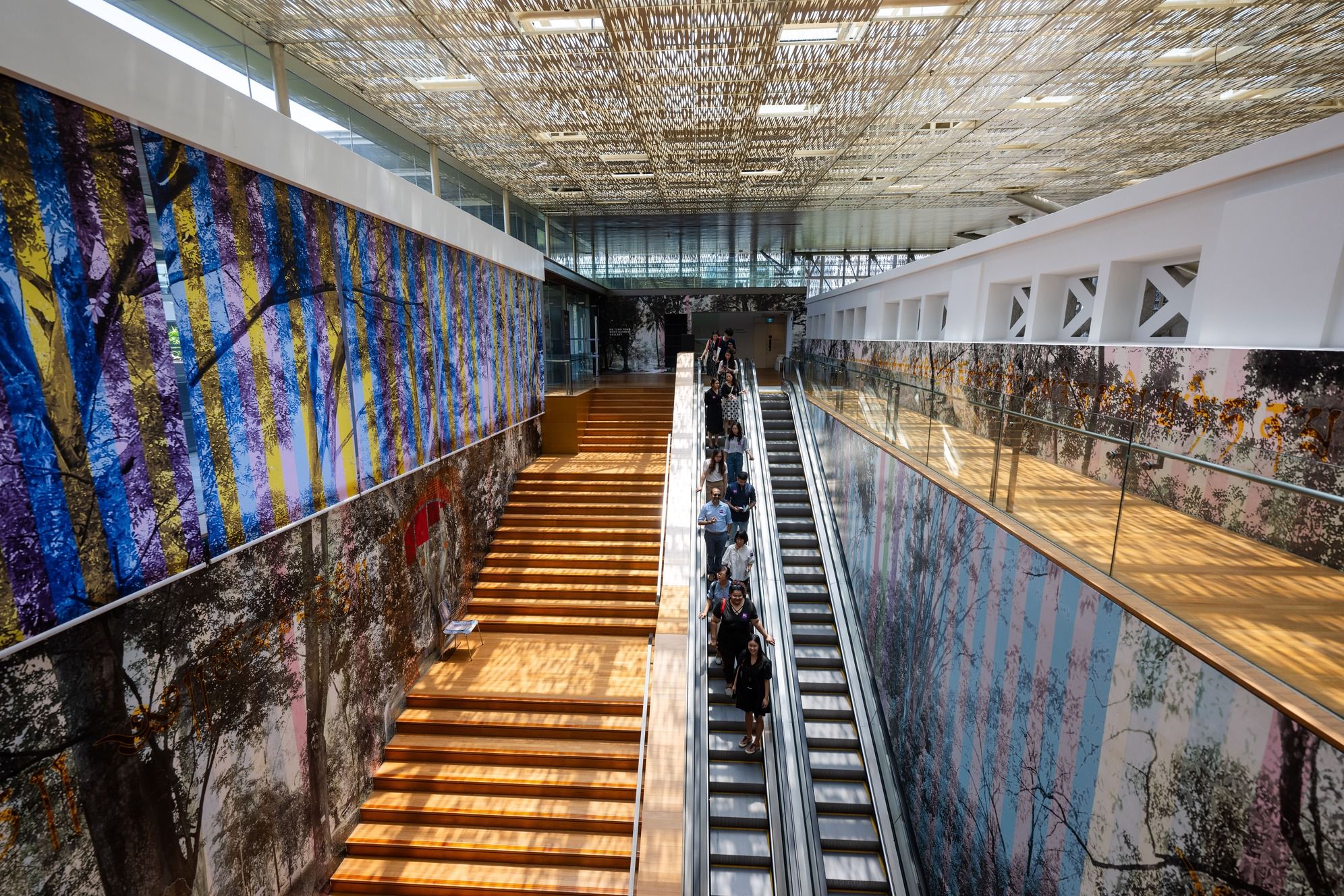
Singapore has also developed two interesting resources to combat its lack of naturally occurring ones, called NEWater and NEWSand NEWater is essentially reclaimed wastewater that undergoes several purification processes and tests to produce water that meets WHO’s standards for drinking water.
The country currently boasts five NEWater plants. By 2060, it hopes to meet 55% of its total water demand with NEWater.
“NEWater (Technology) not only offers hope to Singaporeans, but also several other water insecure countries…it can change the way we think about wastewater globally,” Ong, Singapore Ministry of Sustainability’s deputy secretary, tells YourStory.
NEWSand is Singapore’s answer to its solid waste problem, which became an issue when the country realised its only landfill—the reclaimed island of Semakau—was nearing capacity and would not be able to take any more waste in a few years. Scientists working on solving the problem at Semakau found out that once waste was incinerated, it turned into ash, and that ash, when compacted together, made for solid, long-lasting construction materials.
Singapore, which typically imports sand from other countries, has used this NEWSand to construct a 105-metre-long footpath and other public infrastructure. It has also been experimenting with using NEWSand for the construction of buildings, most notably, parts of its new airport terminal.
In a world seeking a path toward sustainability, Singapore’s exemplary synergy between the public and regulatory realms demonstrates how equal participation and involvement from all facets of society is needed to combat climate change, and how it can be achieved even if you’re a 700-kilometre small country with very little natural resources.
(The reporter was in Singapore at the invitation of the Singapore International Foundation.)
Edited by Megha Reddy









